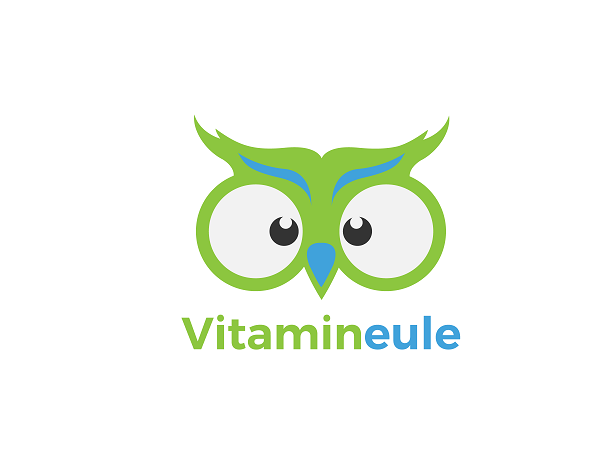

Team Vitamineule
1. The special features of monk's pepper
Chasteberry, also known as chasteberry or Vitex agnus-castus, is a remarkable medicinal plant that has been used in traditional medicine for centuries. Native to the Mediterranean and Asia, this plant is characterized by its striking lavender-colored flowers and its distinctive pepper-like fruits, which inspired the Latin name "agnus-castus." The name chasteberry dates back to the Middle Ages, when monks used the fruits to curb their sexual urges and preserve their chastity. The plant owes this property to the diterpenes and flavonoids it contains, which have a hormone-regulating effect. One of the most outstanding peculiarities of chasteberry is its effect on hormonal balance, especially in women. The plant is often used to treat menstrual problems such as premenstrual syndrome (PMS), irregular cycles and breast tenderness. Scientific studies have shown that chasteberry can regulate the production of the hormone prolactin, which helps relieve the symptoms of PMS and promotes regularity in the menstrual cycle. This hormone-regulating effect makes chasteberry a popular remedy in gynecology, especially among women who suffer from hormone-related conditions. In addition, chasteberry is also used for certain forms of infertility. Some women who have difficulty getting pregnant benefit from taking chasteberry because the plant can help stabilize hormone levels and thus promote fertility. Chasteberry is believed to affect the release of luteinizing hormone (LH) and follicle-stimulating hormone (FSH), which in turn regulates ovulation and can increase the chances of pregnancy. Another notable aspect of chasteberry is its comparatively good tolerance and low risk of side effects. In general, chasteberry is considered safe when taken in recommended doses. Side effects are rare and usually mild, but in some cases they may include stomach discomfort, headaches or skin rashes. Nevertheless, people taking other medications or suffering from chronic diseases should consult a doctor before taking chasteberry to rule out possible interactions. Chasteberry is usually used in the form of capsules, tablets, drops or teas. The dosage can vary depending on the product and individual needs, but a daily dose of 30 to 40 mg is often recommended. Since the effects of chasteberry do not start immediately, continuous use over several months is necessary to achieve noticeable results. In summary, chasteberry is a versatile and valuable medicinal plant that is particularly valued in gynecology. Its ability to regulate hormonal balance and relieve menstrual pain makes it an important part of natural medicine. Despite its many benefits, users should carefully monitor their intake of chasteberry and seek medical advice if unsure in order to achieve the best possible results.
2. The areas of application of monk's pepper
Chasteberry, also known as chasteberry (Vitex agnus-castus), is a plant that has been valued since ancient times for its medicinal properties. Originally native to the Mediterranean, chasteberry has now spread to other parts of the world. Its fruits and seeds are mainly used for medicinal purposes, particularly in gynecology. One of the most well-known uses of chasteberry is in the treatment of menstrual cramps. Women who suffer from premenstrual syndrome (PMS) often report relief from their symptoms by taking chasteberry. These symptoms can include irritability, mood swings, breast tenderness, and headaches. The healing effects of chasteberry are attributed to its ability to regulate hormone levels. It acts on the pituitary gland, a gland in the brain responsible for secreting hormones, and can thus reduce the production of the hormone prolactin. An increased prolactin level is often associated with breast tenderness and other PMS symptoms. In addition, chasteberry is also used for menstrual disorders. Women who suffer from an irregular menstrual cycle or have difficulty becoming pregnant often turn to chasteberry. Due to its hormone-regulating effect, it can help to stabilize the cycle and promote fertility. Some studies have shown that women who took chasteberry had an increased chance of becoming pregnant. Another important area of application is the treatment of menopausal symptoms. During menopause, many women experience hormonal changes that can lead to hot flashes, sleep disorders, mood swings and other complaints. Chasteberry can have a supportive effect here by balancing the hormonal fluctuations and thus alleviating the symptoms. Chasteberry is also used in traditional Chinese medicine and Ayurvedic medicine. In these healing systems, it is used, among other things, to strengthen liver function, promote digestion and support general well-being. It is believed that chasteberry can contribute to the harmonization of the entire organism through its balancing effect on the body and mind. In addition to its gynecological applications, chasteberry is also used to treat acne. Taking chasteberry can help improve the complexion, especially for women who suffer from hormonal acne. The reduction in prolactin levels and the regulation of hormones help to reduce inflammation and skin blemishes. Despite its many positive effects, chasteberry should not be taken uncritically. It is important to follow the dosage recommendations and to consult a doctor or alternative practitioner if in doubt. Women who take hormonal medication or suffer from serious health problems in particular should consult a specialist before taking chasteberry. Overall, chasteberry offers a wide range of possible applications, particularly in the field of gynecology. Its ability to regulate hormone levels and relieve symptoms related to menstruation, fertility and menopause makes it a valuable natural remedy. Its use in traditional medicine also underlines its versatility and the long history of its use to promote health and well-being.
3. Relief from PMS symptoms
Premenstrual syndrome (PMS) affects many women in the period before their menstruation and can cause a variety of physical and emotional symptoms. To alleviate these symptoms, there are various approaches and measures that can be incorporated into daily life. A balanced diet plays a crucial role in relieving PMS symptoms. It is advisable to reduce the consumption of sugar, caffeine and alcohol, as these substances can cause fluctuations in blood sugar levels and thus worsen symptoms. Instead, complex carbohydrates found in whole grains, fruits and vegetables should be preferred. These help to keep blood sugar levels stable and reduce mood swings. In addition, eating foods rich in calcium and magnesium, such as dairy products, green leafy vegetables and nuts, can be helpful, as these minerals have been shown to relieve PMS symptoms. Regular physical activity is another important factor. Sports and exercise, especially aerobics and yoga, promote the release of endorphins, which act as natural painkillers and improve mood. A daily routine of moderate physical activity can help reduce stress and reduce physical discomfort such as cramps and back pain. Using relaxation techniques can also be extremely effective. Techniques such as meditation, breathing exercises and progressive muscle relaxation help reduce stress and alleviate the emotional symptoms of PMS, such as irritability and anxiety. Regular relaxation training can increase overall stress resistance and thus reduce the intensity of PMS symptoms. Another way to relieve PMS symptoms is to take supplements. Vitamin B6, calcium, magnesium and essential fatty acids such as omega-3 can help reduce symptoms. However, it is advisable to consult a doctor before taking supplements to discuss the appropriate dosage and possible interactions with other medications. Herbal remedies and teas can also provide natural relief. Chasteberry (Vitex agnus-castus) is a well-known herbal remedy often used for PMS and can help regulate hormone levels. Chamomile and ginger tea can be helpful in relieving cramps and nausea. The use of heat can also be beneficial. Hot water bottles or warm baths relax the muscles and can thus relieve cramps and back pain. Regular application of heat, combined with light stretching exercises, can significantly reduce physical discomfort during the PMS phase. A structured sleep rhythm is also important. Adequate and high-quality sleep supports general health and can help stabilize mood and relieve physical discomfort. It is helpful to maintain a regular sleep routine and ensure a comfortable sleeping environment. In summary, relief from PMS symptoms can be achieved through a combination of healthy diet, regular physical activity, relaxation techniques, possibly supporting nutritional supplements and herbal remedies, as well as the application of heat and a good sleep schedule. Every woman is different and it can be helpful to try different approaches to find out which measures work best for each individual. A holistic approach that considers both body and mind can help to significantly improve the quality of life during the PMS phase.
4. Monk's pepper in the form of dietary supplements
Anyone who would like to take chasteberry in the form of a dietary supplement should definitely pay attention to the form of the active ingredient and its origin. Chasteberry capsules are particularly suitable for increasing the chasteberry value. They are very well tolerated and are utilized by the body to a high degree. The preparation should also not contain any chemical additives such as microcrystalline cellulose. Anyone who buys a preparation from Germany can be sure that the product has also been produced safely and is of high quality.
Our recommendation:
Vitamineule® Monk's Pepper Capsules
In our online shop you will find our monk's pepper capsules from Vitamineule®, which are completely free of artificial additives. Vitamineule® monk's pepper capsules contain 30 mg of pure monk's pepper extract per capsule. Each can contains 90 capsules. In addition to fast and free shipping, we offer a voluntary six-month return guarantee for all products.
5. Conclusion: The special features of monk's pepper
Chasteberry (Vitex agnus-castus) is a medicinal plant that is characterized by its regulating effects on the female hormone balance. Its positive effects on the menstrual cycle are particularly noteworthy. Women who suffer from menstrual cycle disorders such as irregular or painful periods can experience relief by taking chasteberry. The plant can also alleviate the symptoms of premenstrual syndrome (PMS), making it a valuable support in the period before menstruation. Another important aspect of chasteberry is its beneficial effect on fertility. By regulating the hormone balance, the plant can be helpful in treating fertility problems and increase the chances of pregnancy. Many women also report positive effects during menopause, as chasteberry can reduce typical symptoms such as hot flashes and mood swings. Chasteberry is generally well tolerated and rarely causes side effects, making it a popular natural alternative to synthetic hormone preparations. In summary, chasteberry is a versatile medicinal plant that, thanks to its hormone-regulating properties, can particularly support women with various gynecological complaints and is usually well tolerated.

